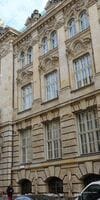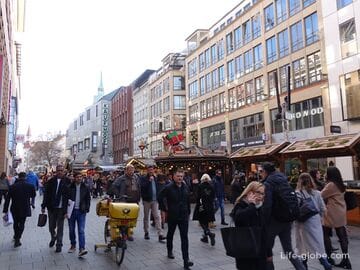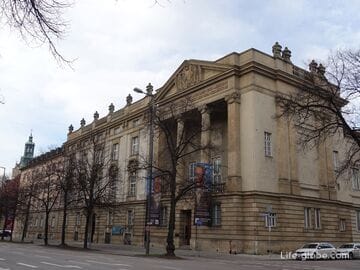Cardinal Faulhaber Street (Kardinal-Faulhaber-Straße) is one of the most important historical streets in the old town of Munich.
Street Cardinal Faulhaber, well-known somewhere between 1375 and then called Bart Gassin (Barts Gassen). Since 1818 was known as Promenaders (Promenadegasse / Promenade alley). The current name of the street was in 1952, after the death of the German Archbishop of Munich and Freising and cardinal Michael von Faulhaber's Palace, which was located on this street.
In the past street Cardinal Faulhaber's and some of the surrounding streets, was the place where was erected by aristocratic palaces and public buildings.
Today the street is a Cardinal Faulhaber's still retains the urban landscape, which is dominated by former public palaces and administrative buildings.
The length of the street is 200 metres away. It lies in the northwestern part of Munich's old town and extends almost in a straight line in the direction from North-East to South-West, and connects to a square Salvatorplatz (Salvatorplatz) with square Promenadeplatz.
Objects in the street Cardinal Faulhaber's Strasse
Palace Mongela
Palace Mangala, also known as the Palace of Montgelas (Palais Montgelas), was built in the years 1811-1813 Portuguese architect Emmanuel Hirigoyen for count Maximilian Joseph von Mangala in the classical style and feature a French-German architect and Bavarian Builder Jean-Baptiste Motive.
From 1969 to the present, the Palace is integrated (included) historical 5-star hotel Bayerischer Hof.
The former Palace is situated on a street corner Cardinal Faulhaber's and square Promenadeplatz at: Kardinal-Faulhaber's the Strasse 14A.
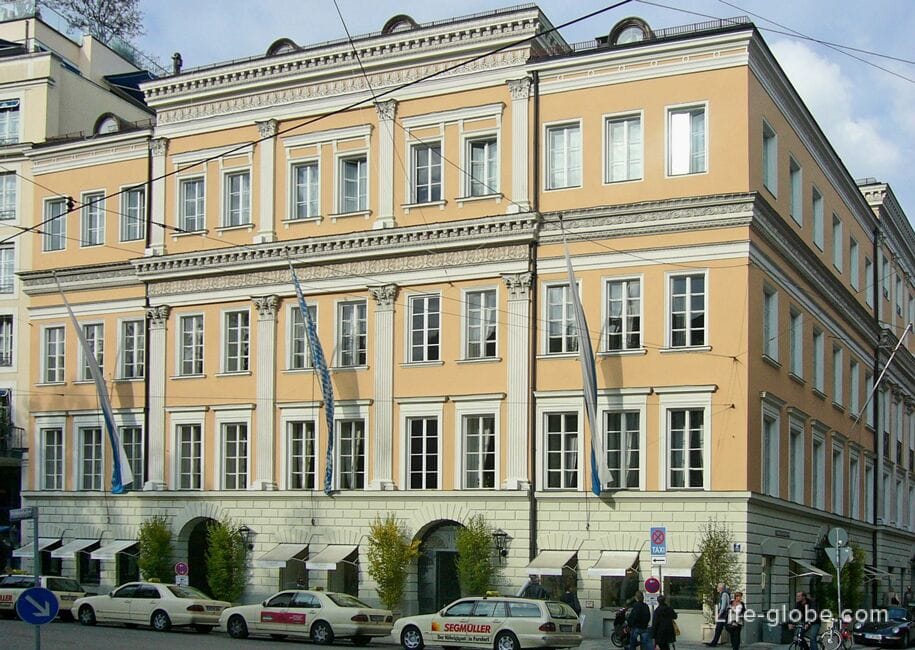
The monument to Kurt Eisner
Near the Palace Mongela side street Cardinal Faulhaber's-Strasse, is a monument to Kurt Eisner (Kurt-Eisner-Denkmal), which is a metal floor plate (plate) installed under the open sky on the pavement to commemorate the assassination on 21 February 1919 at the site of the first Prime Minister of Bavaria Kurt Eisner.
The memorial shows the body contour Eisner, in the position in which the police marked it with chalk when it detects a dead man. Read more about the monument-memorial to Kurt Eisner...
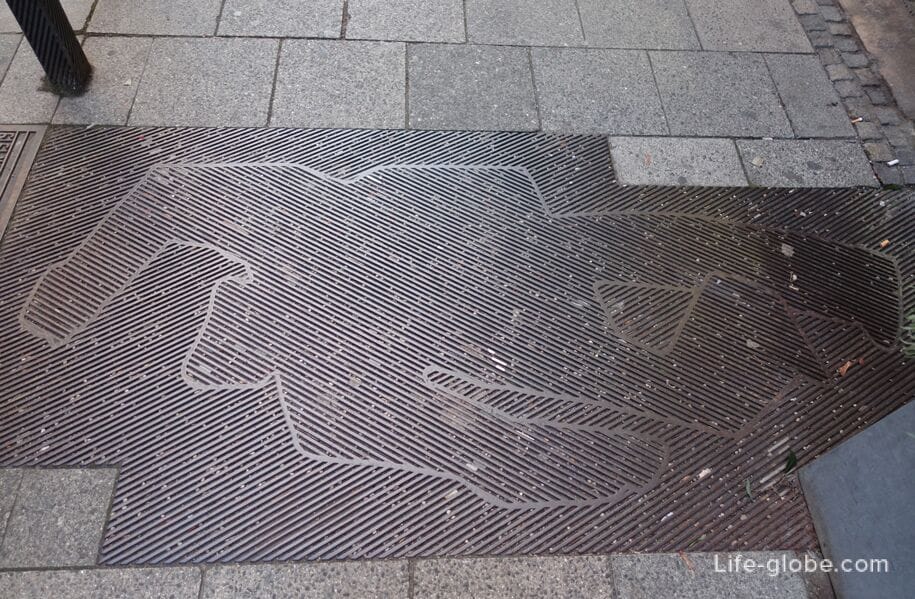
Bank building
Opposite the Palace was Mainela, at the address: Cardinal Faulhaber's-straße 14, there is a majestic corner building in the neo-Renaissance style, built by William Martens in the 1885-1886 years.
In 1891-1893 years the building was expanded to the North. Reconstruction: 1948-1952, 1977, in 1923.
Today, the walls of the building there is a Bank "HypoVereinsbank".
Residential and commercial building
Address: Cardinal Faulhaber's-straße 15, located corner residential and commercial building, blurted out in the style of Maximilian and was originally constructed somewhere in 1855.
The building is on the corner of Cardinal Faulhaber's and Prannerstrasse (Prannerstraße).
Palace Neuhaus-Preising
Palace Neuhaus-Preising (Palais Neuhaus-Preysing) is located almost opposite a residential and commercial building at number 15 at: Prannerstrasse, 2.
Although the Palace of Praising and is not located directly on the street Cardinal Faulhaber's, however, it is a significant historical building and is located in the immediate vicinity of the street Cardinal Faulhaber's-Strasse.
The Palace was built around 1735 for the family of Pasinkov and now has one of the few historic facades preserved on Prannerstrasse.
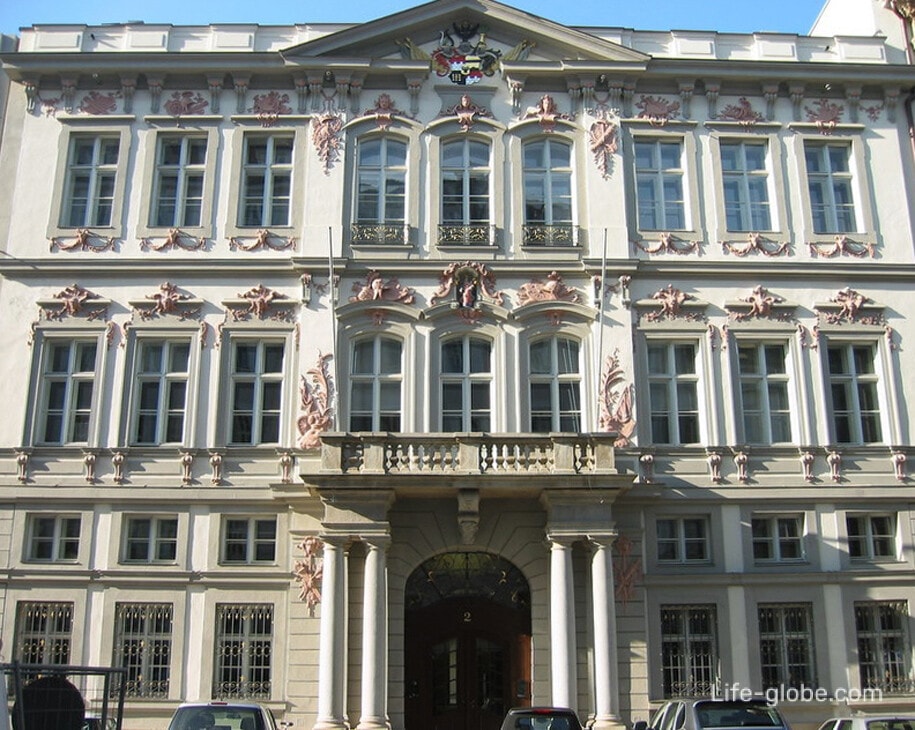
Palace Neuhaus-Preising, which is also called the "New Palace of Praising" are to be distinguished from another Palace Preising, which is also called "the Oldest Palace of Praising" (Elder Palais Preysing) and which is located on the street Residenciales 27 (Residenzstraße). "Old" and "New" because the palaces were built at different times: the house on Residenciales was built between 1723 and 1728 years. Read more about the oldest Palace of Praising...
Photo Oldest Palace Praising
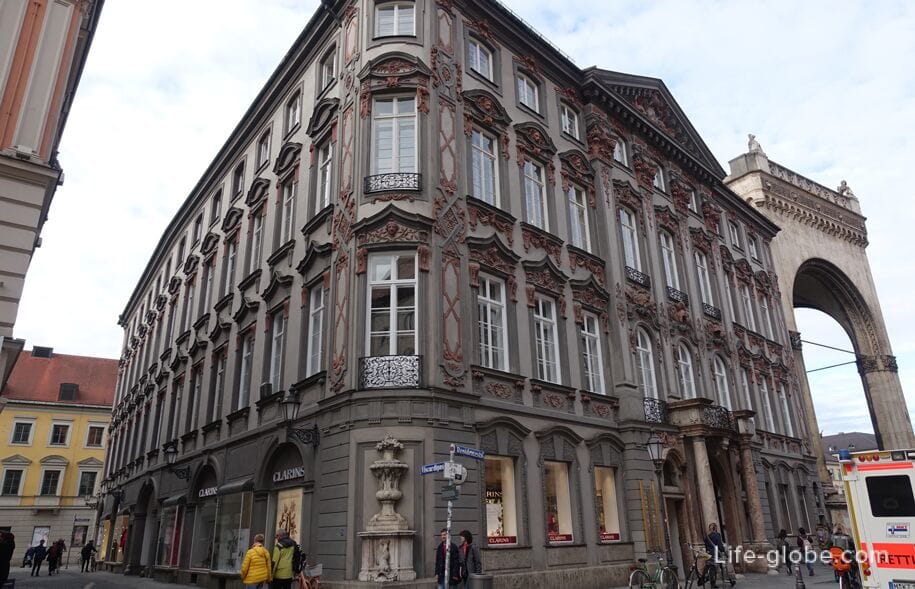
Porcia Castle
Porcia castle (Palais Porcia) is located at the address: Cardinal Faulhaber's-Strasse, 12.
The Palace was built in 1693, court architect Enrico Zuccalli mansion Floor Fugger and his wife Maria Anna Katarina.
It was the first Palace in Italian Baroque style in Munich.
Since 1710, the Palace changed several owners. Received its name in honor of Prince Porcia.
Between 1731 and 1737 the years, the building was modified françois de Couville in the Rococo style.
In 1934, the Palace was acquired by the Bank.
Restored after the destruction during the Second world war occurred in the years 1950-1952.
The name of the former Palace also written as "Palais Porzia" or "Palais Portia".

The building of the Bavarian mortgage Bank exchange
The former Bavarian mortgage exchange Bank (Bayerische Hypotheken - und Wechsel-Bank) is located at the address: Cardinal Faulhaber's-straße 10-11.
A monumental building in the Baroque style was designed by architect Emil Schmidt in 1895-1896 for the Bavarian mortgage and bill Bank.
The building is rich in sculptural decorations on the facade stands out among other nearby buildings. The main entrance is made in the form of an arch and is decorated with two large statues (of male and female figures) that support the carved balcony.
Today, the walls of the buildings are located, including, retail and commercial premises, a café and a restaurant.

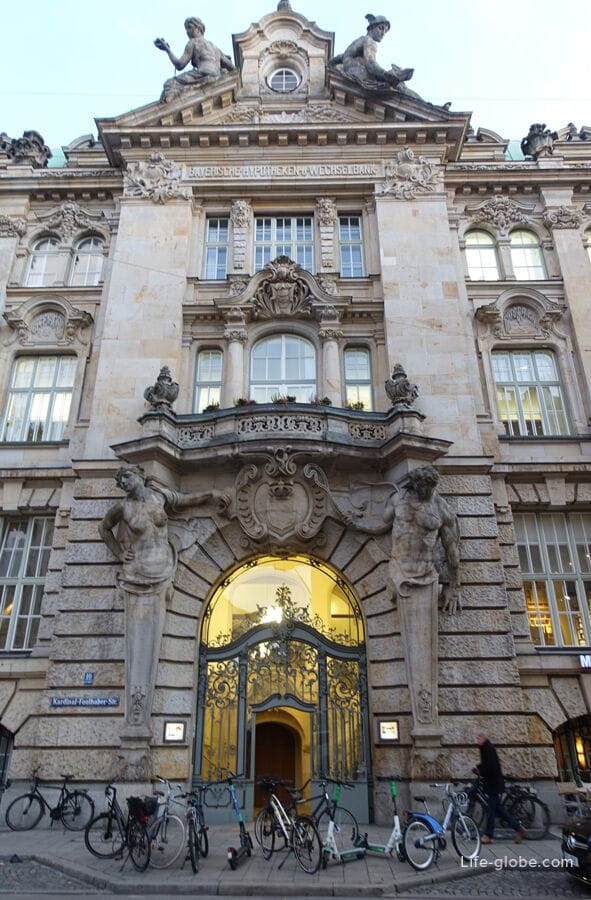
Holnstein Palace (Archbishop's Palace)
Archbishop's Palace or the Archbishop's Palace (Erzbischöfliches Palais), the former Palace of Holnstein (Palais Holnstein), considered one of the most important surviving palaces in the Rococo style in Munich is located at the address: Cardinal Faulhaber's-Strasse, 7.
Master construction Rococo Francois de Kyvele Palace was built between 1735 and 1737 years. About for whom the building was constructed, there are two versions: 1. for the son of the elector Karl Albrecht - Franz Ludwig von Holnstein; 2. for Sofia Carolina von Ingenheim, Countess Holnstein mother of Franz Ludwig and mistress of elector Karl Albrecht.
Since 1821 the Palace was the home and official residence of the Archbishop of Munich and Freising (hence the title "Archbishop's Palace"). Between 1977 and 1982 in the building lived and worked for the then Archbishop cardinal Joseph Ratzinger, who later became Pope Benedict XVI.
The Palace is made in the form of a quadripartite complex around the courtyard. The front part of the Palace was used in the Executive order, while back - was intended for private life.
The building has three floors. Above the main entrance is a balcony. The upper Central part of the house completes the pediment with the coat of arms of the counts of Holnstein.
Currently the building is not available to the public, within its walls are the official premises of the Secretariat of the Archbishop and the apartment of the Archbishop.
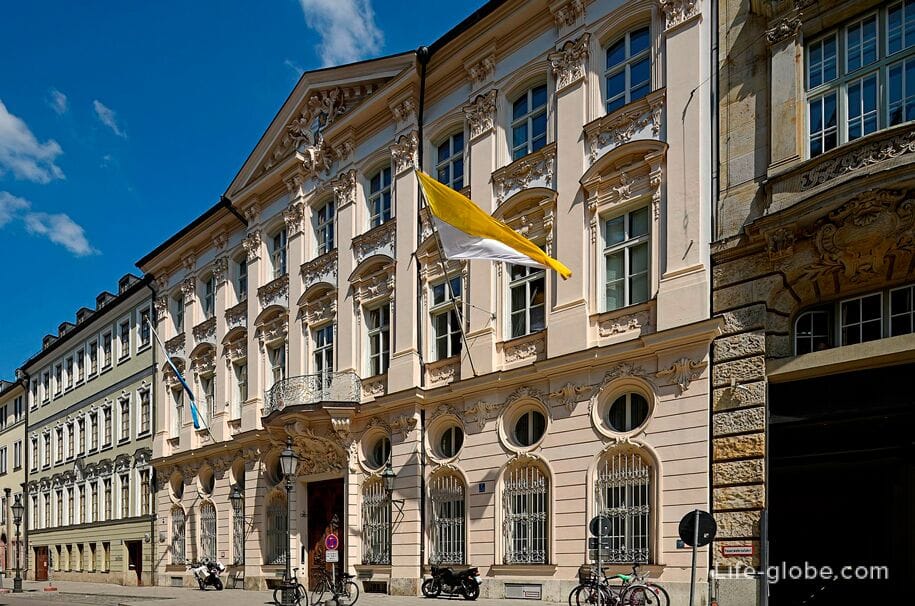
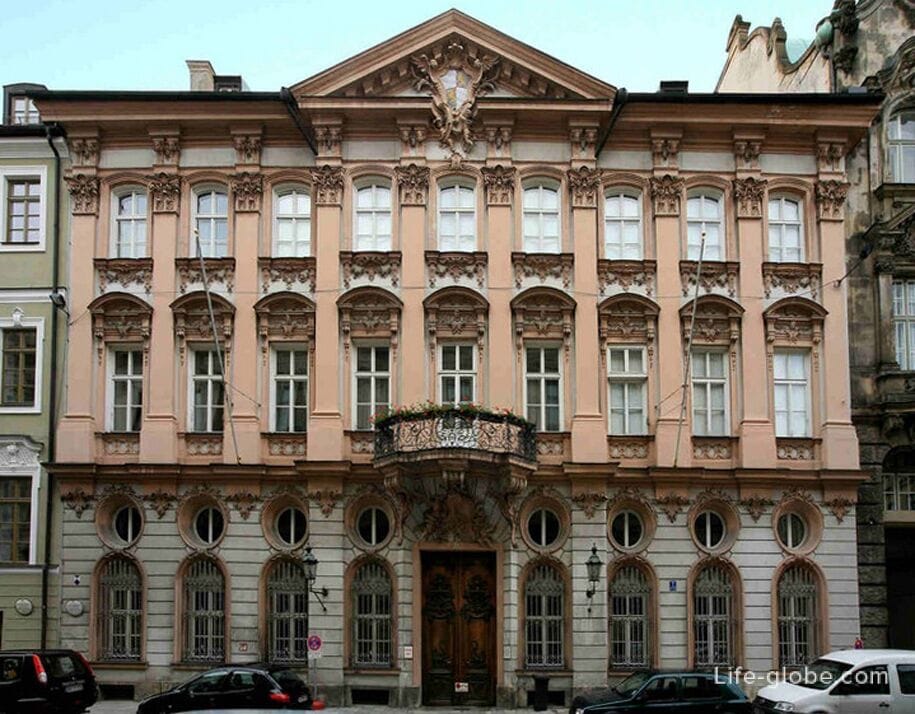
Palace Spreti
Spreti Palace (Palais Spreti) is located at the address: Cardinal Faulhaber's Strasse, 6.
The Palace was built around 1720 in the late Baroque style by order of count Maximilian Joseph von Terring Jettenbach.
From 1724 1786 for years the Palace belonged to count Spreti. Were changed in 1789.
The building was rebuilt with major changes after the destruction during the Second world war. In 1970 he added another floor. On the second floor of the facade preserved stucco.
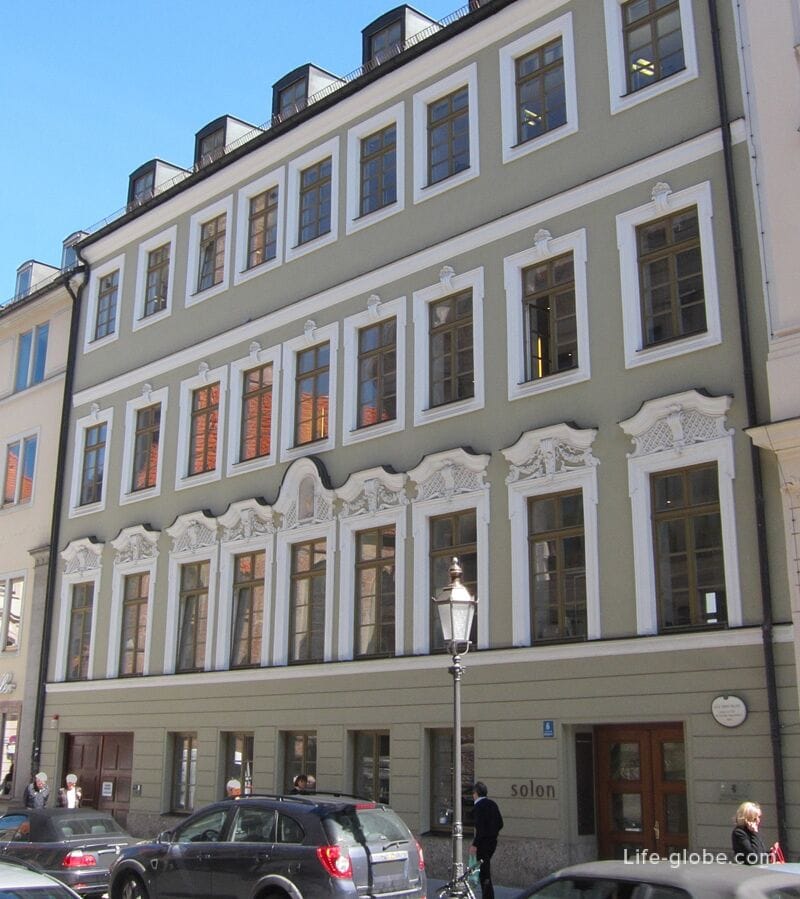
The corner building at number 5
The corner building, located at: Kardinal-Faulhaber's the Strasse 5, was built in 1889 in the style of Neorenaissance.
Today, the walls of the buildings are located, including commercial premises - shop.
A former subsidiary of Royal Bank
The former branch of the Royal Bank, the Bavarian state Bank (Ehem. königliche Filialbank) occupies an entire block, is located at the address: Cardinal Faulhaber's-straße 1-3, and is included in the list of Bavarian monuments.
A monumental building in the Baroque style, was built in 1893-1894 (the southern part) and 1907-1908 (building extension to the North) according to the plans of the architect albert Schmidt.
The building remained a residence of the Royal Bank branches (in 1918, Bayerische Staatsbank) prior to its merger with Bayerische Vereinsbank in 1971, which, in turn, merged with Bayerische Hypotheken-und Wechselbank and became HypoVereinsbank in 1998.
Main facade of the building in the center is decorated with a pediment. On the roof are sculptures and coats of arms. The corners of the building made in the form of semi-circular pavilions.
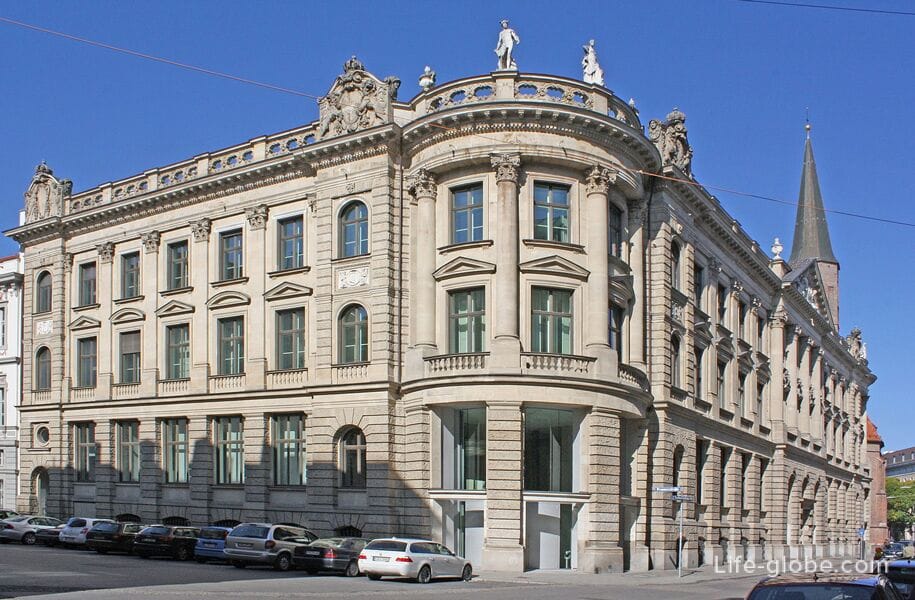
The Church Of Salvatore
Greek Orthodox Church of St Salvator or Severability Church (St. Salvator, Salvatorkirche / Salvatorkirche) located at the intersection of Cardinal Faulhaber's streets Salvatorstr (Salvatorstraße) and square Salvatorplatz (Salvatorplatz), at: Salvatorstraße 17.
This former cemetery Church made of red brick in the late Gothic style.
The construction of the Church was probably completed in April, 1493. The opening took place the 15th of August 1494.
Salvatorkirche was rebuilt by German architect Leo von Klenze to conduct Orthodox services. 18 Dec 1829 it was opened according to the Greek Orthodox ritual and from that time used Greek Orthodox Christians.
Significant elements of the Church: part of the Gothic stained-glass Windows, the remains of late-Gothic religious murals, the iconostasis. Read more about Church of St. Salvator...

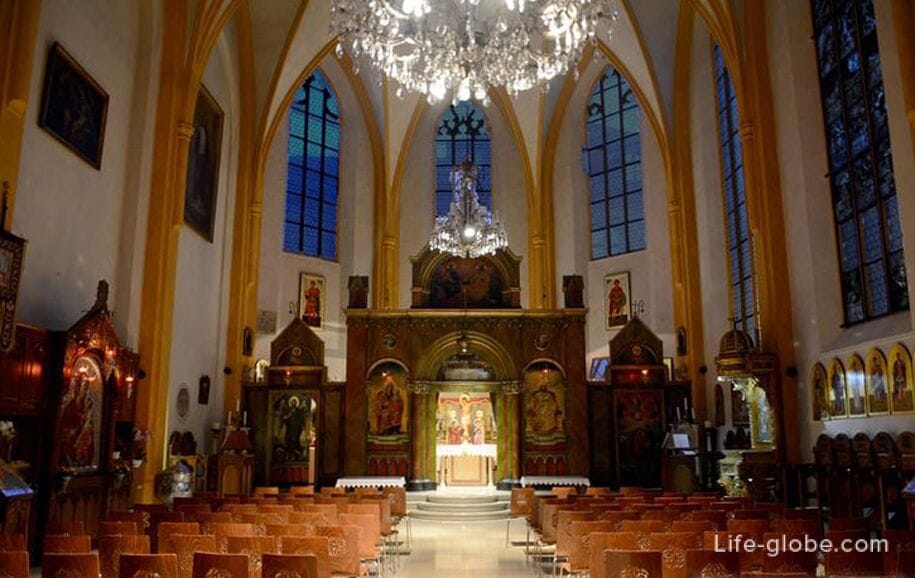
All accommodation in Munich, including near the street Kardinal-Faulhaber's the Strasse and in the historical centre of the city, you can view and book here




